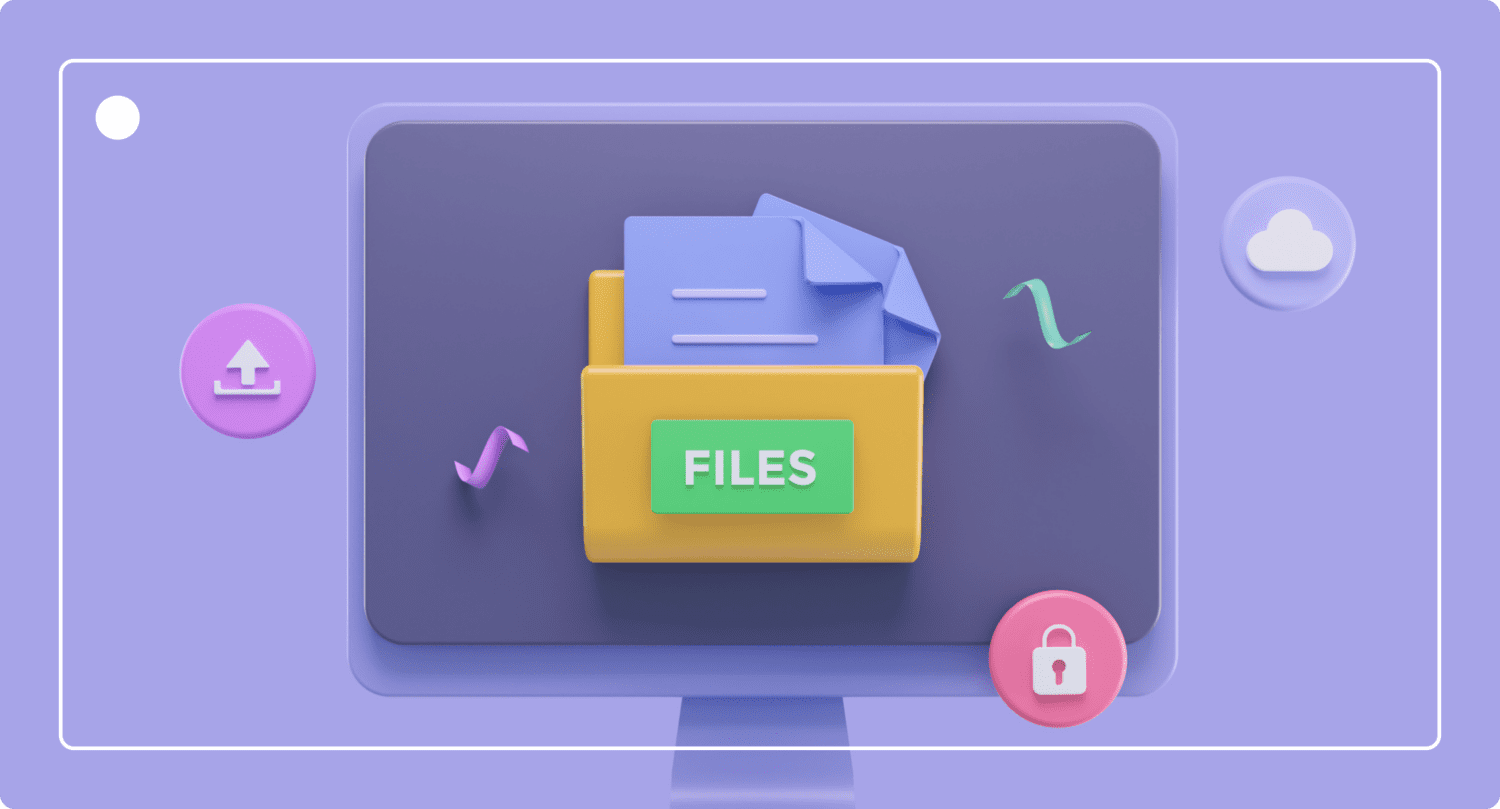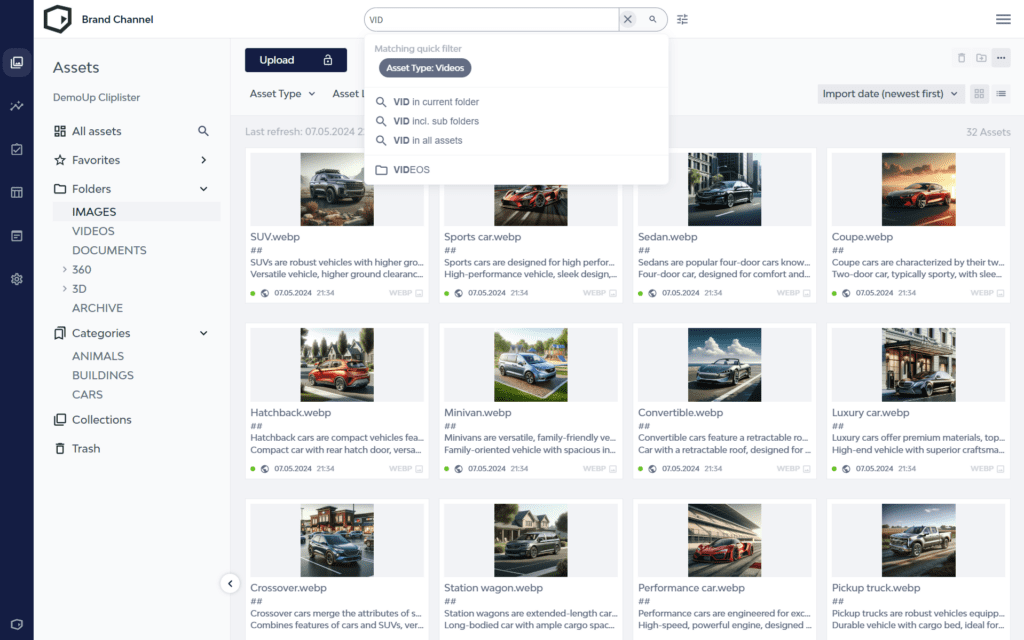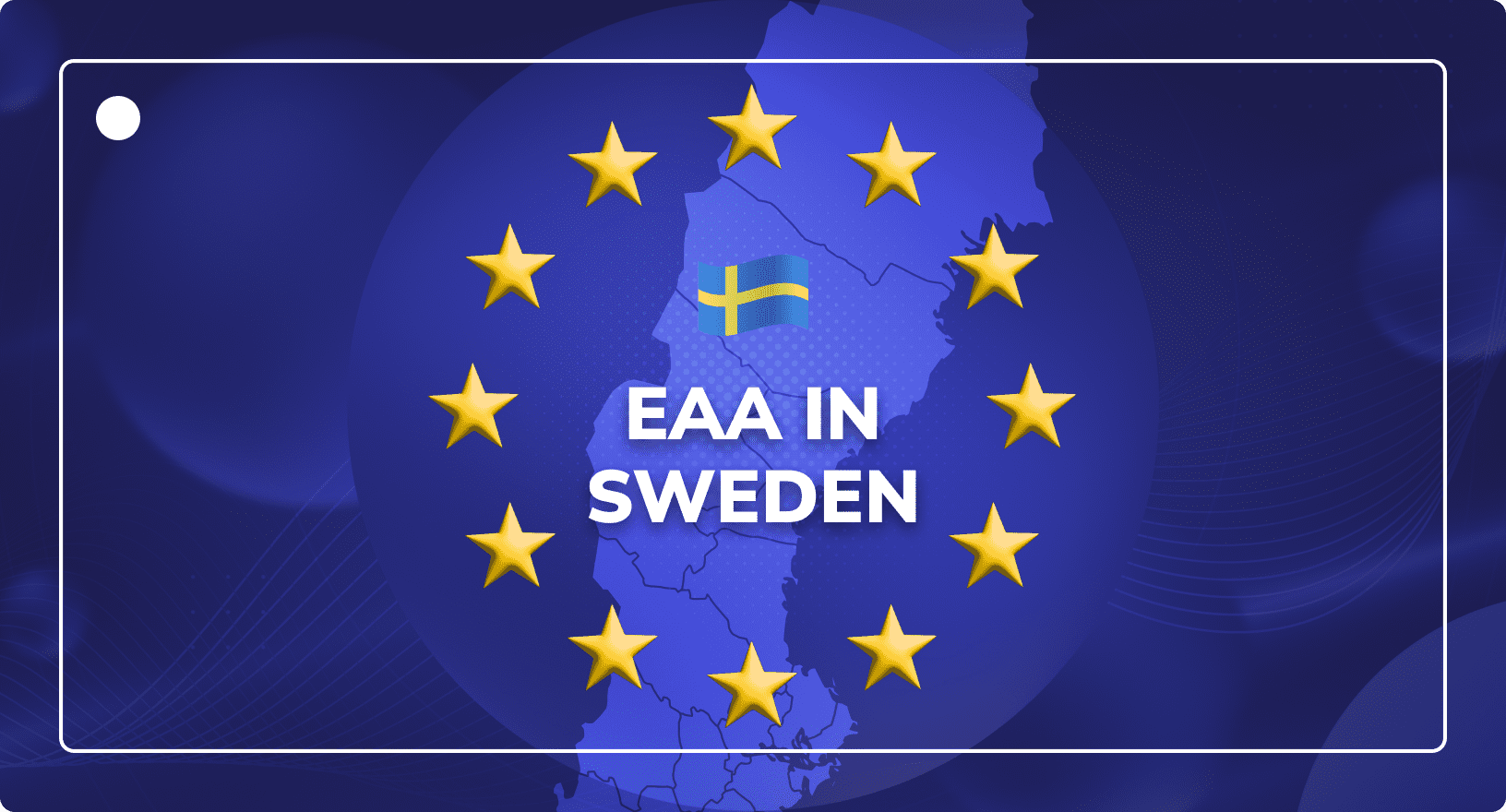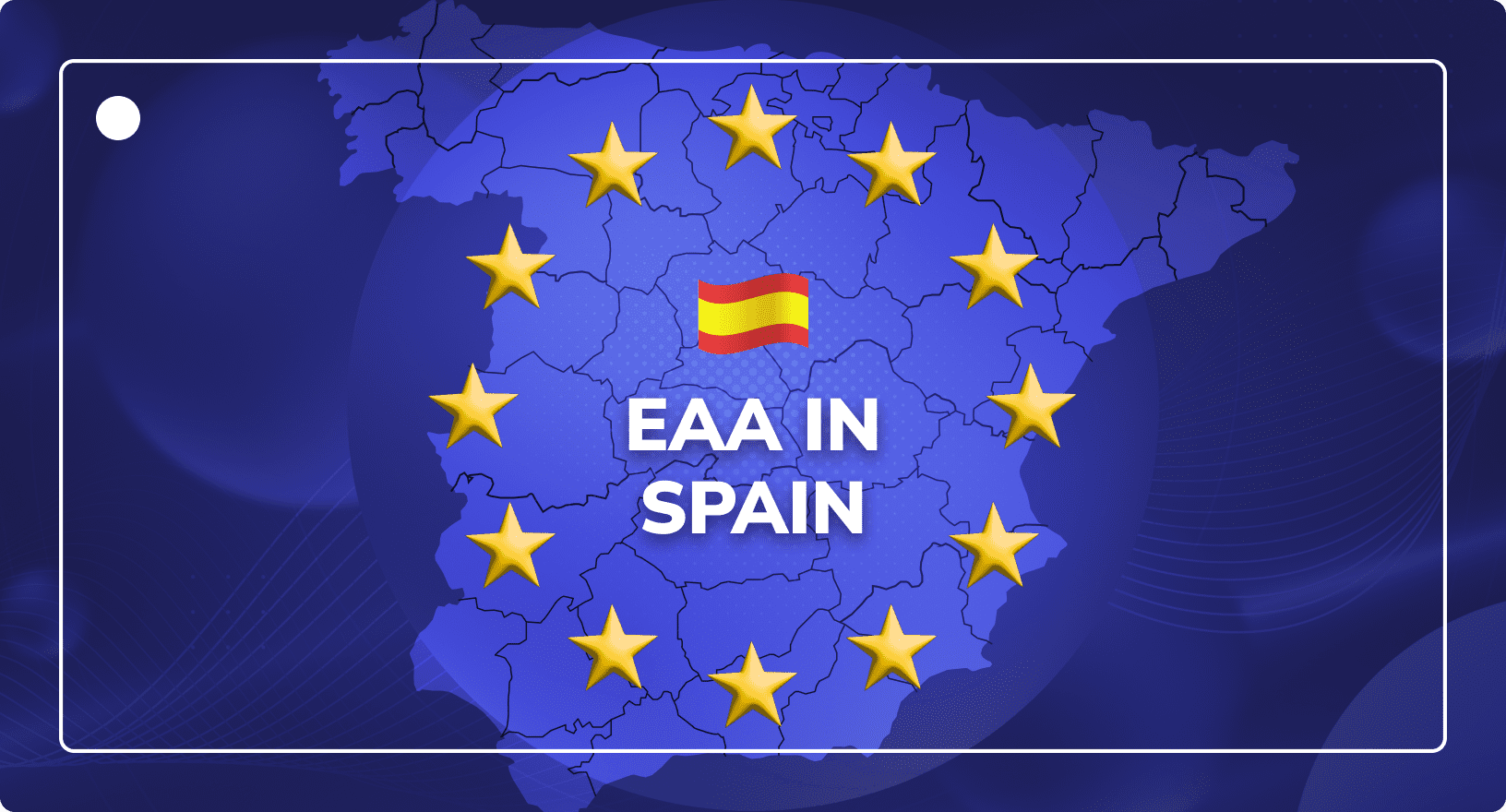Media Asset Management: The Ultimate Guide to MAM
Digital Asset Management
Updated on February 14, 2025
Does your company work with thousands or millions of visual assets?
Most of the time, finding, storing, and organising video and multimedia files is a huge headache. In fact, 83% of marketers claim they’ve had to recreate an asset because they couldn’t find it.
Add to this the challenge of distributing this content to the right people at the right time, and it becomes clear a more efficient solution is needed.
But managing these digital assets doesn’t have to be hard.
The rest of this article explores the concept of media asset management (MAM), how to choose the correct MAM solution for your needs, and best practices for managing multimedia files and marketing assets.

Comparing MAM Providers? Download Your Free Playbook!
Download Free NowWhat is Media Asset Management (MAM)?
Media asset management (MAM) is the process of organising, storing, sharing, and distributing media files like images, videos, and 3D/AR models.
The term can also be used interchangeably to describe media asset management solutions. These platforms help teams organise large media libraries of video and multimedia files and share content with relevant persons.
The Difference Between DAM and MAM
Closely related to MAM is digital asset management, or DAM for short.
While these two systems seem similar on the surface, MAM focuses more on digital media assets.
Even more focused is video asset management software, that’s tailored for video files and the video production process.
Media asset management is more specific than DAM because a DAM can manage all digital files, whereas a MAM is specifically designed to manage audiovisual content and media files like videos, images, music, or 3D/AR.

A DAM is much more comprehensive in comparison. It can manage a broader spectrum of assets, not only including video and multimedia files, but also text documents, spreadsheets, and any other type of file.
MAM System Features
Media asset management systems have several features that make them more specialised for handling large quantities of product media. Here are some examples:
- Video Lifecycle Management: Comprehensive tools handle every stage of product video content, from creation and editing to archiving.
- Proxy File Management: MAMs manage proxy files for quick access, allowing staff to work with lower-resolution versions for faster loading and editing.
- Product Video Management: Effective tagging, archiving, and retrieving product videos to enhance customer experience with rich media.
- E-Commerce Platform Integration: Seamless DAM integrations with PIM systems and e-commerce platforms ensures the latest video content is available in product listings.
- Automated Publishing Workflows: Automate workflows for publishing media files to various channels, including social media. MAMs with content syndication can automate these tasks to ensure that all promotional materials are synchronised across platforms.
DAM System Features
Digital asset management software is more broadly defined. While there are several benefits of digital asset management for any organisation, here are features specific to DAM in e-commerce:
- Comprehensive digital asset cataloguing: DAM systems offer robust cataloguing features that manage a wide range of digital assets—photos, videos, graphics, PDFs, product descriptions, and more—ensuring all content is centrally located and easily searchable.
- Brand management tools: To ensure brand consistency, DAM systems provide access to brand guidelines, logos, and marketing templates which are essential for maintaining a uniform brand image across all products and campaigns.
- Digital rights management: DAM systems help manage the legal aspects of asset use, including copyright and licensing information, which is crucial when using various media across marketing channels to avoid legal pitfalls.
- Integration with marketing automation tools: DAMs usually integrate with marketing automation tools, which helps in deploying assets across different marketing campaigns, personalising content, and tracking engagement metrics.
- Global Distribution and CDN Support: DAM systems support content delivery networks (CDNs) and global distribution capabilities. Essential for serving content quickly and reliably to consumers worldwide, DAM software enhances the speed and performance of e-commerce sites.
Media Asset Management Benefits
Using a MAM system brings many essential benefits. Here are some of the more notable areas it can improve:
MAM Benefits
Organisation and accessibility
Better product showcases
Streamlined workflows
Cost Efficiency
Scalability
Improved cross-platform consistency
Multimedia assets can then be optimised for each channel to conduct personalised marketing campaigns and address target groups in the best possible way.
How to Choose a Media Asset Management System
After you decide to implement a media asset management system, the next step is to select a suitable solution. It is important to select a MAM platform based on individual needs and requirements.
There are several things to consider before you start sending out RFPs to MAM providers:
- Integration capabilities: Check how well the MAM system can integrate with product information management (PIM) systems, e-commerce platforms, product experience management software, content management systems (CMS), customer relationship management (CRM) tools, and other digital marketing technologies.
Seamless integration is essential for automating workflows and ensuring that all systems work together without requiring excessive manual input or causing data silos. - Scalability and flexibility: Consider whether the MAM system can scale with your business growth. It should be capable of handling increasing amounts of rich media assets and traffic as your e-commerce operations expand.
Additionally, the system should be flexible enough to accommodate new types of digital media assets and adapt to evolving business needs and market trends. - User interface and usability: Evaluate the user interface (UI) of the MAM system to ensure it is intuitive and user-friendly for your team. Complex systems often have steep learning curves which reduces adoption rates among your staff.
Choose a system that provides a good balance between advanced features and user accessibility. - Security and compliance: Because media files can include sensitive and proprietary content, your MAM system should have security features to protect your assets from unauthorised access.
Additionally, verify that it complies with relevant industry regulations and data protection laws, such as GDPR, if you operate in or handle data from the European Union. - Cost and return on investment (ROI): Consider the total cost of ownership, including upfront costs, implementation, training, and ongoing maintenance. Compare these costs against the expected benefits, such as time savings, reduced redundancies, and improved campaign effectiveness.
A good MAM system should offer a clear ROI by enhancing operational efficiency and potentially increasing sales through better asset utilisation.
Carefully evaluate these factors so you choose a MAM system that not only fits your current needs but supports future growth. Remember that as your organisation grows, the number of media assets will scale exponentially.
The Best Media Asset Management Software
If you’re looking for a digital asset management system with MAM capabilities, look no further than DemoUp Cliplister’s digital asset management software. No other software offers such extensive video asset management or 3D asset management capabilities.

In addition, DemoUp Cliplister’s DAM offers brands video syndication to publish content in 450+ major online shops, and retailers in the network have access to content from 3,000+ global brands – all published directly in the product gallery.
Add to this cloud storage, automated workflows, and video digital asset management tools, DemoUp Cliplister provides everything you need for to manage high-volume video libraries typical of brands and online shops.
Want more information? See the DemoUp Cliplister DAM solution in action.
Other MAM Providers
Here is a list of some other MAM platforms, along with their alternatives:
- Aprimo & alternatives
- Bynder & alternatives
- Canto & alternatives
- CELUM & alternatives
- Cloudinary & alternatives
- Brandfolder & alternatives
- Frontify & alternatives
You can also see our list of the best digital asset management software providers.
Implementing a Media Asset Management System
Implementing an effective media asset management solution requires several steps.
- Create metadata – To ensure fast and easy access, the creation of metadata is important. This greatly enhances the search and selection of different content.
- Choose system administrators and set access rights – Equally important is user rights management. Only authorised team members should have global access to the company’s internal assets. These super admins should then delegate who can add new content.
- Define the user hierarchy – A defined user hierarchy is essential for effective workflow within an organisation.
- Integrate with existing tools – Integrations with other tools in your MarTech stack provide automation capabilities and simplify workflow management.
- Test the system – Testing ensures all integrations and automations are functioning correctly and that errors are minimised after launch. Be sure to check for duplicates and missing licences, and that you have the latest versions of all your assets.
- Launch the system – After you troubleshoot all the errors, it’s time to go-live.
- Onboard your team – When the system is live, be sure to implement training and ongoing dialogue about your new media asset management tools.
- Upkeep and maintenance – Asset management solutions require continuous maintenance and upkeep, so be sure to maintain oversight on how the system is being used and how you can better drive adoption.
While MAM solutions focus more on video files and other digital media, the implementation process can be very similar to that of a DAM. Read our article on implementing a digital asset management system for more information.
The Future of Media Asset Management
The use of media asset management systems is growing steadily. These types of software solutions are suitable for almost any company that handles multimedia assets.
According to a recent report by Handelsblatt, an effective media asset management system significantly increases organisational efficiency and productivity.
Another trend expected in the future of media management is the use of artificial intelligence in these solutions. An example could be automating the translation of subtitles in video and multimedia files or automating portions of the video production process.
Machine learning can be used to automatically generate metadata and enrich media content with the appropriate keywords and information. This can significantly simplify the search for specific files.
Cloud-based solutions also represent an upcoming trend, which brings significant advantages. In addition to saving resources, cloud solutions offer options for scaling and adapting software capabilities and staying up to date.
As a company, you are therefore extremely flexible and benefit from a broad range of services.
The effects of the expected trends continue to enable the optimisation of media asset management processes and support companies in the maintenance and incorporation of media files into the MAM.
The structuring of digital content as well as central access brings benefits to your customers as well, which is a huge competitive advantage, especially in e-commerce applications.
Wrapping Up
MAM systems are becoming increasingly important (if you want to know why, read this article). The possibility of central, uncomplicated access to your media library greatly improves organisational workflows.
These solutions help shorten communication channels and save working time by optimising media asset workflows and metadata management. The implementation of a MAM system ensures that organisational processes are improved by creating a uniform, organised file storage location.
Want to know more about how DemoUp Cliplister can help with your media management needs? Talk to a friendly member of our team and we’ll be happy to show you how we provide a single source of truth to manage rich media content.
Frequently Asked Questions
Still have questions or concerns about managing media assets? Read through our FAQs or contact us for more information.
MAM organises, stores, and retrieves media assets efficiently, enhancing workflows and reducing operational costs for businesses.
MAM systems can seamlessly connect with PIM, CRM, CMS, and marketing platforms, automating asset management and ensuring consistent brand messaging across channels.
Essential features include robust integration capabilities, scalability, advanced search functions, rights management, and user-friendly interfaces.
Yes, by optimising media file organisation and accessibility, MAM systems enhance content quality and user engagement, which are critical factors for SEO.
MAM is specialised for managing rich media assets like video files and audio, while DAM encompasses a broader range of digital assets including documents and images.
Better Content. More Sales.

Fill out the form to discover our end-to-end eCommerce content solutions for brands & shops




